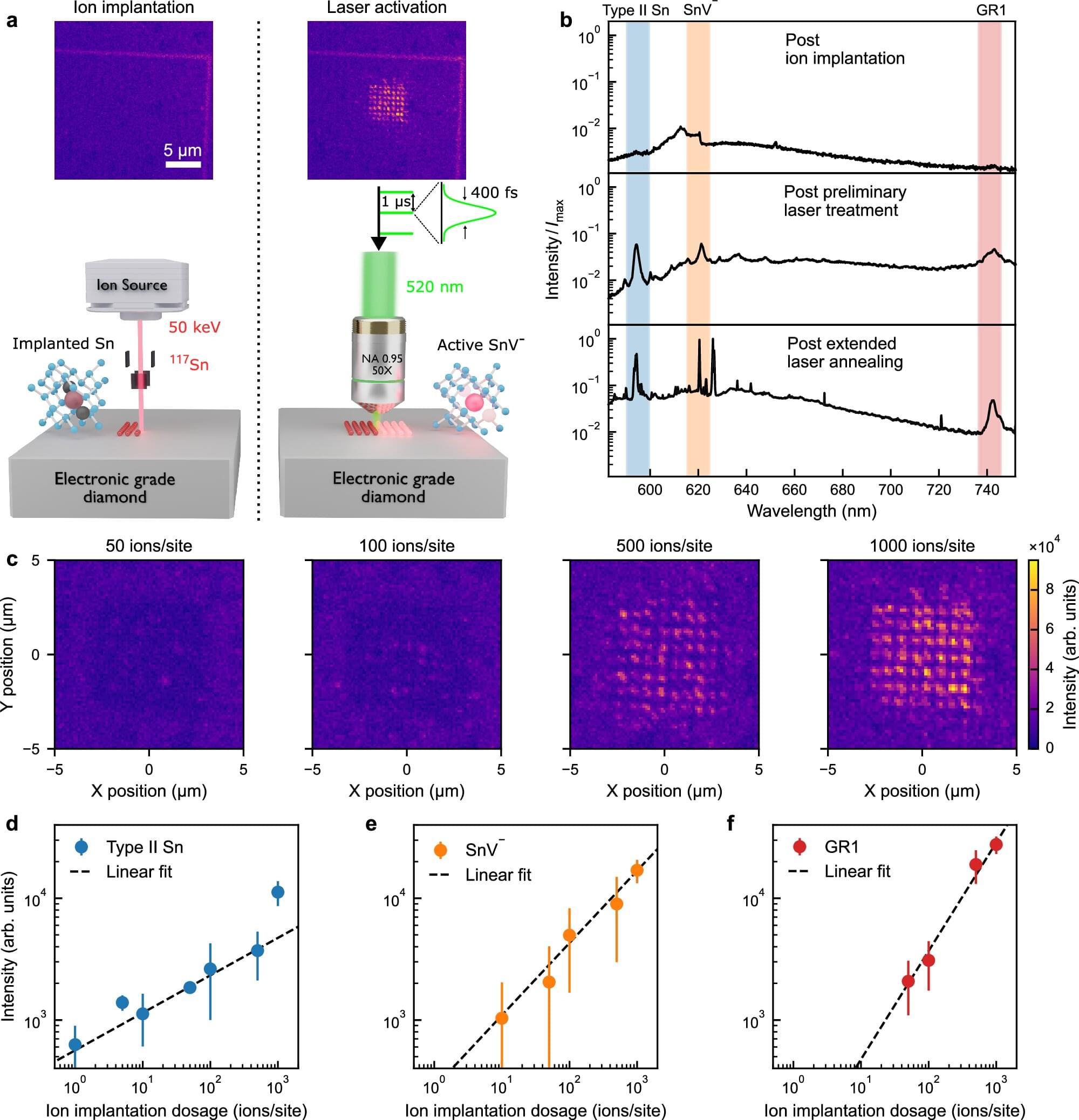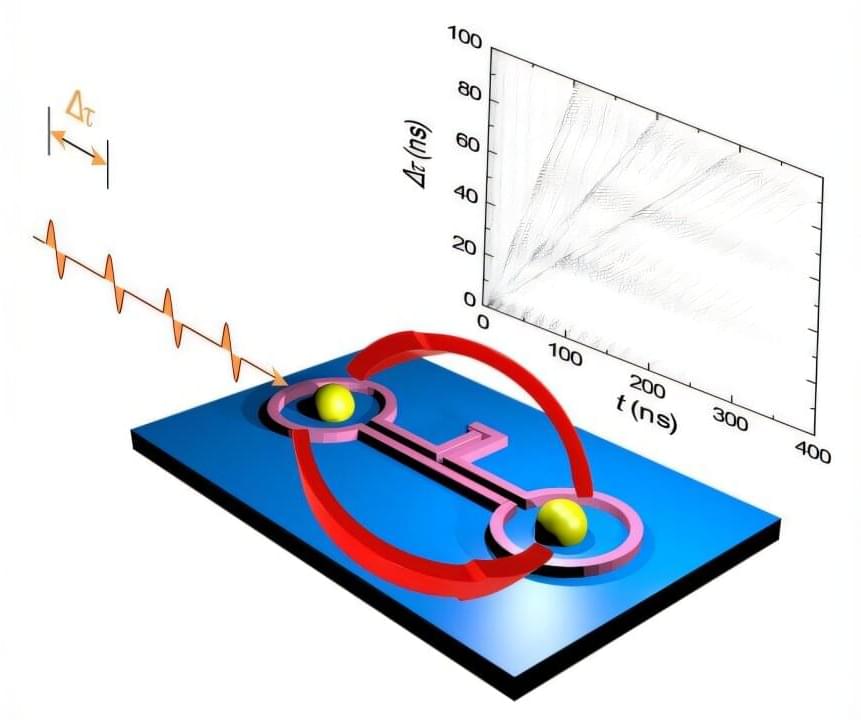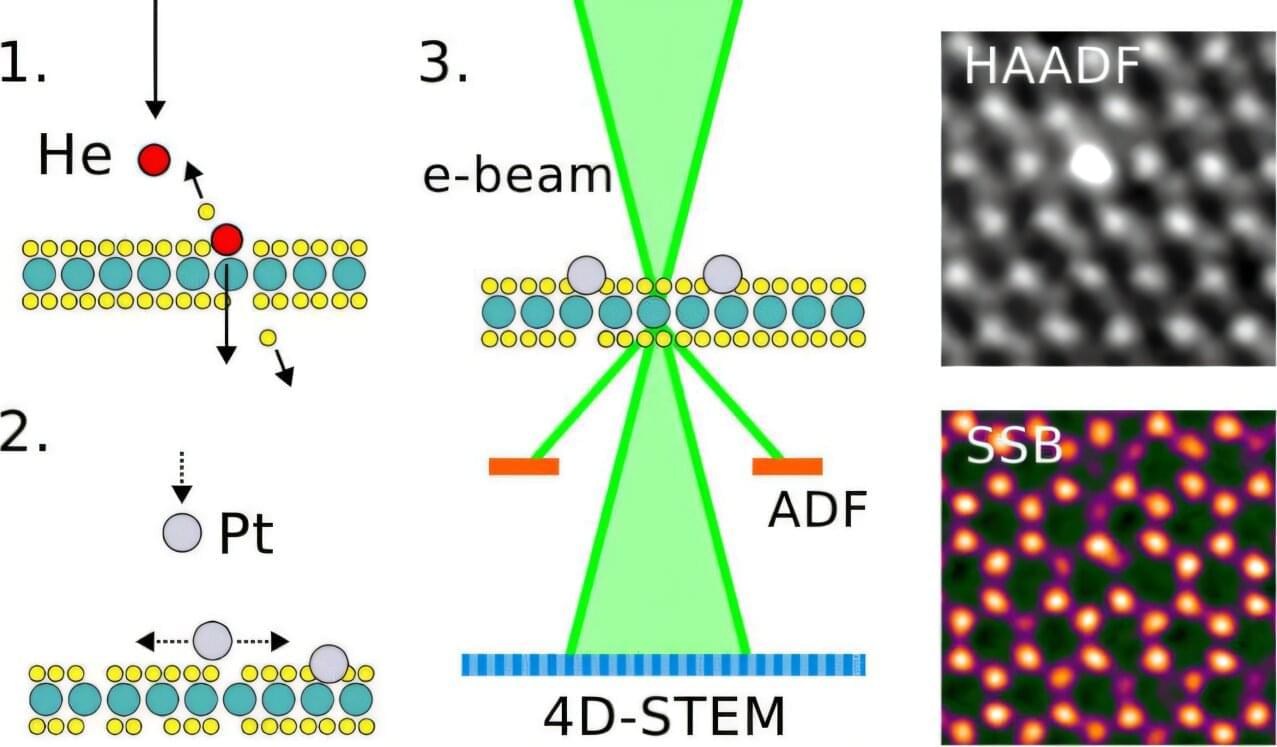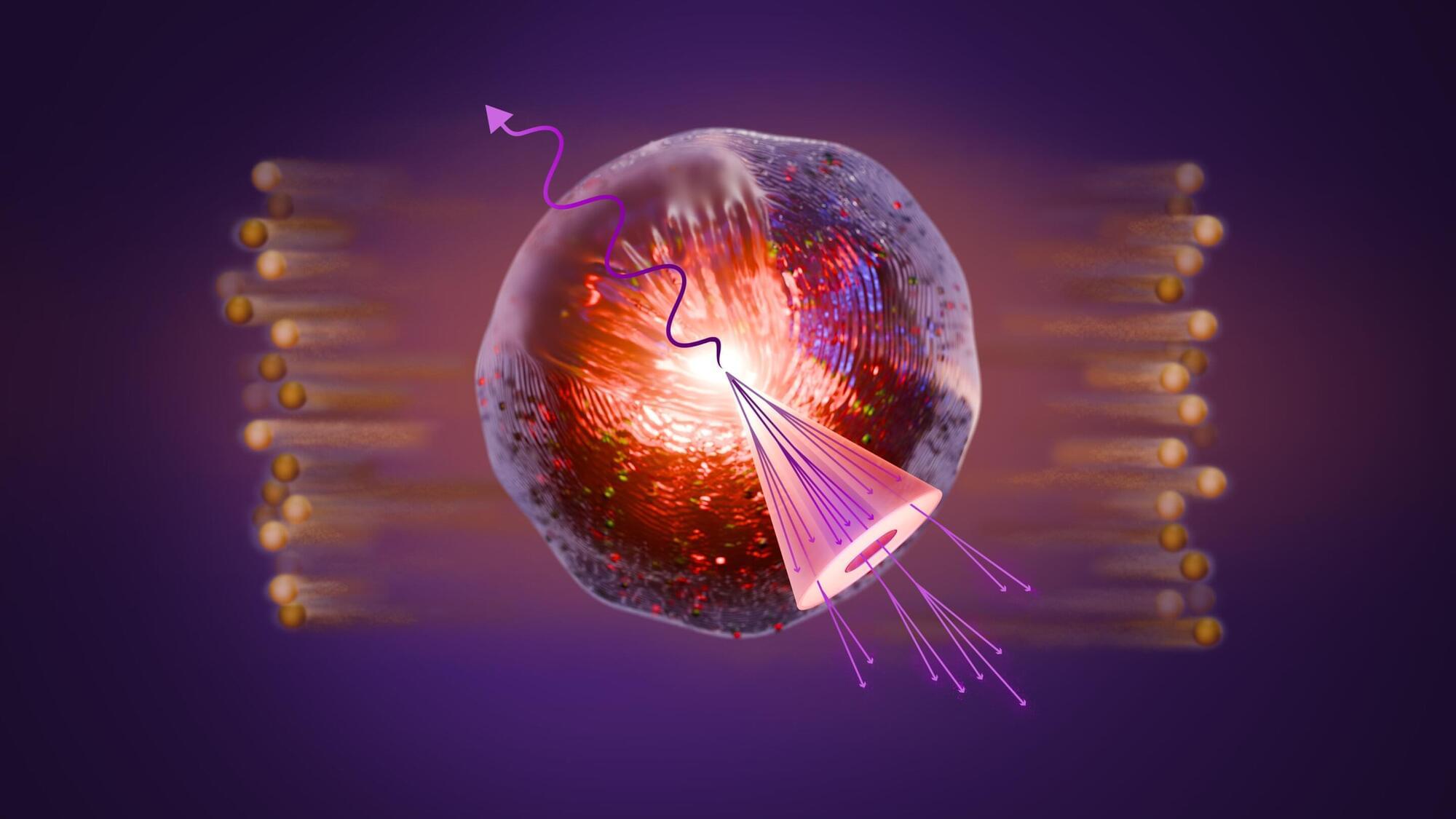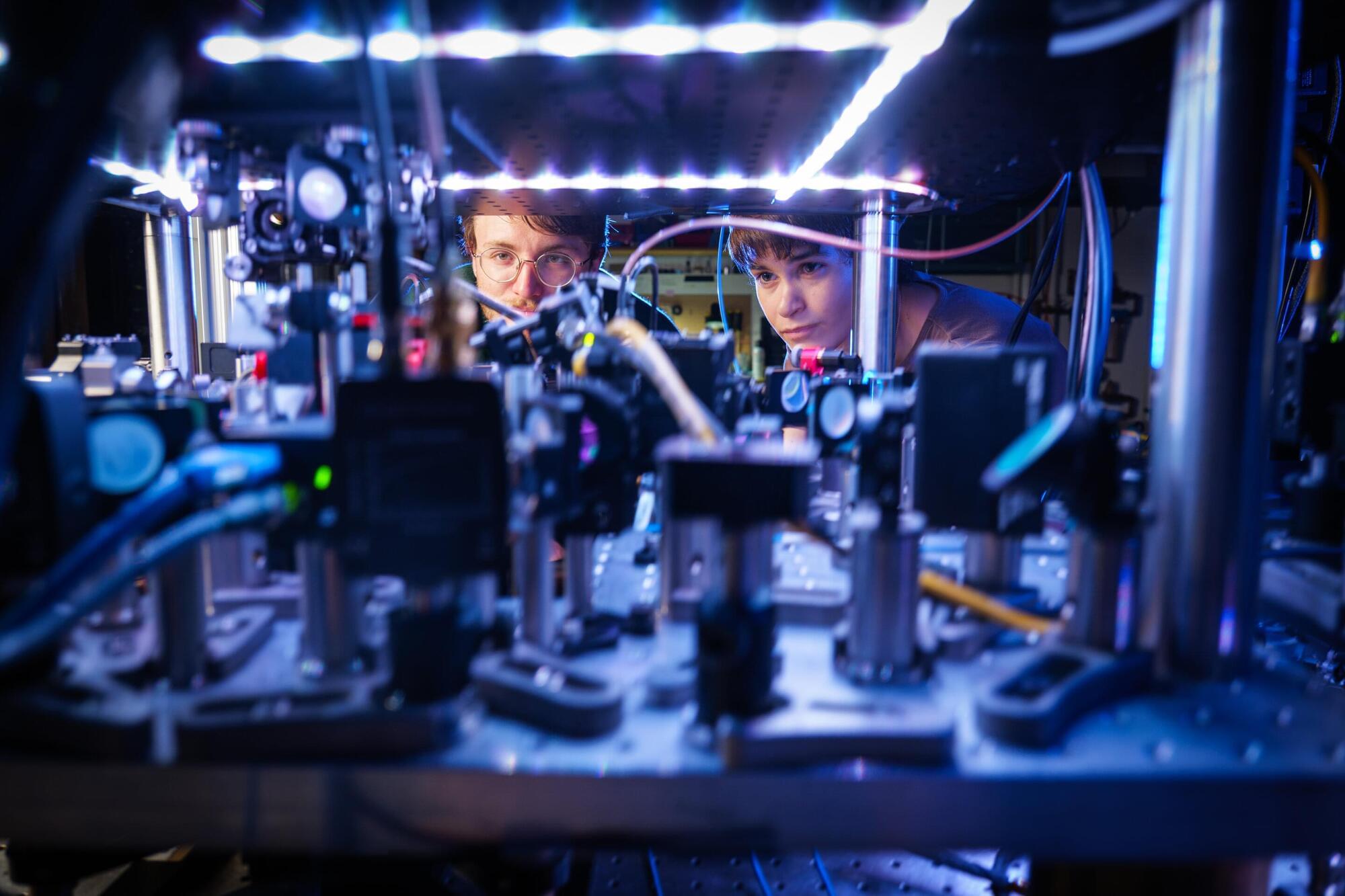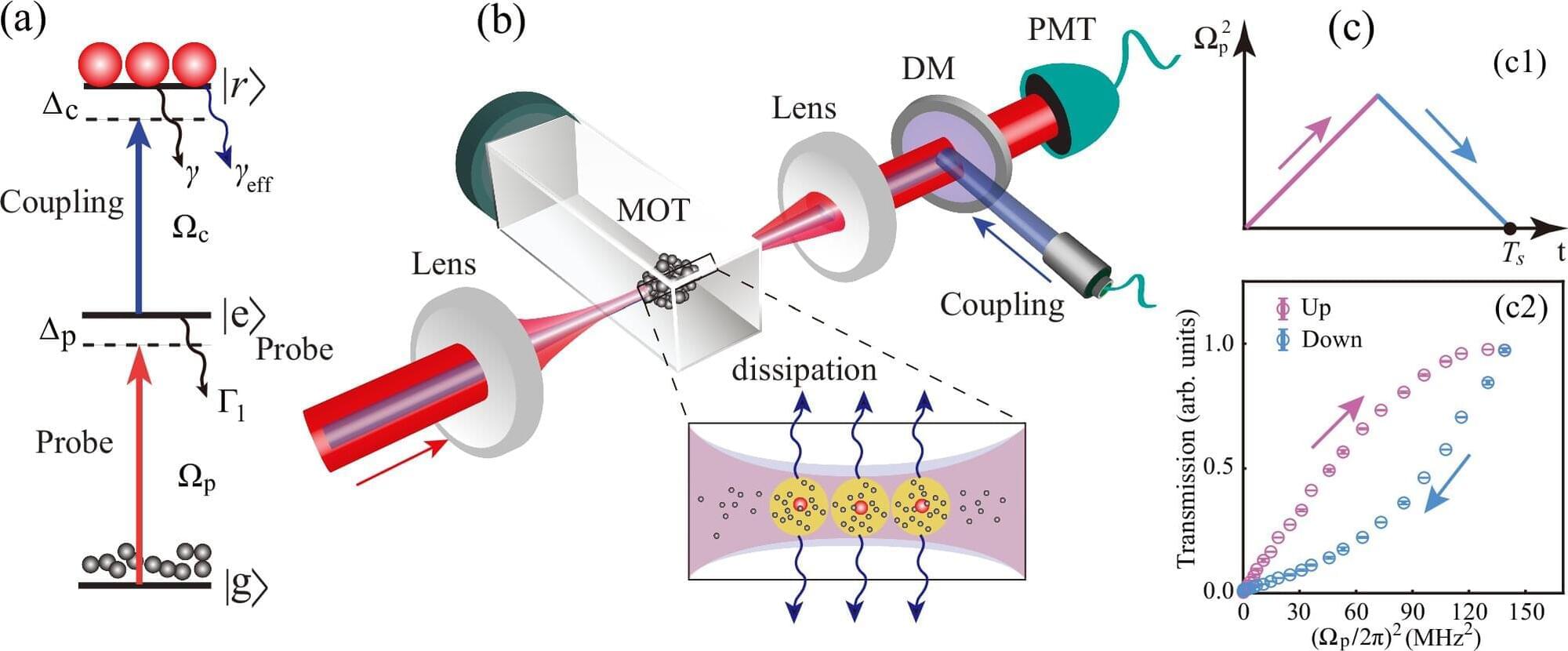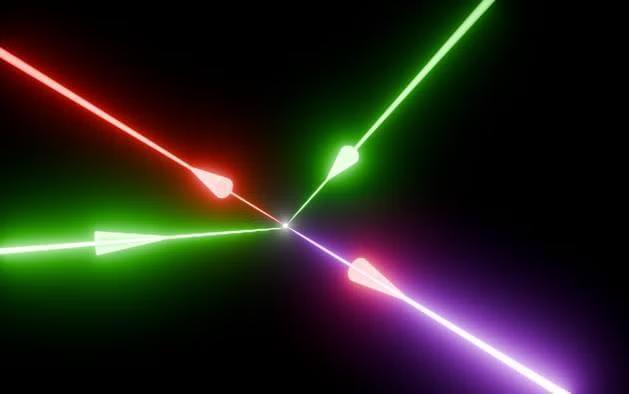A new study led by researchers at the Universities of Oxford, Cambridge and Manchester has achieved a major advance in quantum materials, developing a method to precisely engineer single quantum defects in diamond—an essential step toward scalable quantum technologies. The results have been published in the journal Nature Communications.
Using a new two-step fabrication method, the researchers demonstrated for the first time that it is possible to create and monitor, “as they switch on,” individual Group-IV quantum defects in diamond—tiny imperfections in the diamond crystal lattice that can store and transmit information using the exotic rules of quantum physics.
By carefully placing single tin atoms into synthetic diamond crystals and then using an ultrafast laser to activate them, the team achieved pinpoint control over where and how these quantum features appear. This level of precision is vital for making practical, large-scale quantum networks capable of ultra-secure communication and distributed quantum computing to tackle currently unsolvable problems.
